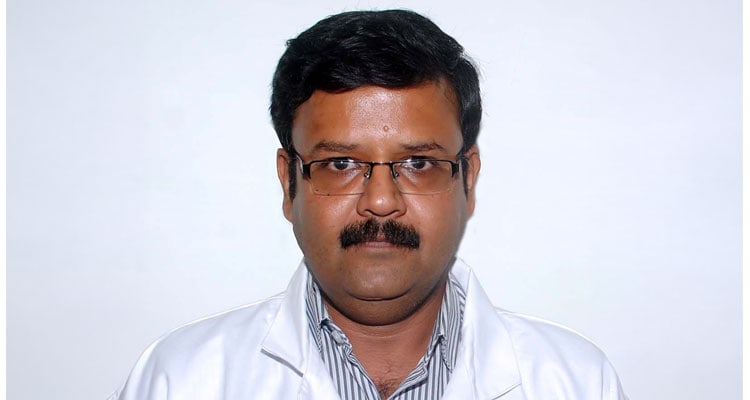Dr Deepak Gupta, Senior Consultant – Pulmonologist at Apollo Hospitals Bilaspur, highlights how systemic gaps in diagnosis and access to testing are causing lung cancer to be mislabelled as tuberculosis, delaying life-saving treatment
 Dr Deepak Gupta, Sr Consultant – Pulmonologist, Apollo Hospitals Bilaspur
Dr Deepak Gupta, Sr Consultant – Pulmonologist, Apollo Hospitals Bilaspur
In India, most commonly first label on a stubborn cough is still “pulmonary tuberculosis.” That reflex is understandable: the World Health Organization estimates that India carries 27 per cent of the planet’s TB cases, with an incidence that remains about 134 new infections per 100 000 people each year—far higher than most countries can imagine.
Yet when tuberculosis becomes the automatic diagnosis, lung-cancer patients pay with time they do not have. A prospective audit across four teaching hospitals found that 18 per cent of physicians initially wrote “TB” for what proved to be lung-cancer, and almost nine out of ten of those doctors started full anti-TB therapy. A classic AIIMS-Delhi series showed something similar at the bedside: 14 of 70 confirmed lung-cancer patients (20 per cent) had swallowed months of TB drugs before anyone ordered a biopsy, losing roughly four to five precious months.
Those months matter enormously because Indian lung-cancer survival begins from a very low baseline. In the largest global review of cancer-registry data, India posted an age-standardised five-year survival of just 3.7 per cent (2010-2014) the lowest anywhere the authors looked. The explanation is stark: fewer than one in ten Indian patients are diagnosed while the tumor is still in an early, resectable stage; the rest arrive in advanced disease, where cure is rare.
Why does the mix-up between TB and cancer stay so common even in busy tertiary centres? Skills are not the chief culprit; structure is. Anti-TB drugs are free under the National TB Elimination Programme, disbursed in minutes through the Nikshay digital platform, while a CT-guided biopsy or a bronchoscopy still demands out-of-pocket payment, travel to a city and lost wages. Fewer than one-sixth of district hospitals have on-site pathology services, so tissue confirmation is literally out of reach for much of rural India. Faced with these constraints, patients and clinicians often choose the path of least resistance—start TB treatment first and “see if the X-ray clears.”
The result is a system that gently nudges everyone towards a TB trial even when the X-ray could just as plausibly be cancer. By the time the mass keeps growing and the patient is finally referred, curative surgery is usually off the table. It is therefore misleading, even unfair, to cast the problem as doctors “missing” tumours; they are following the incentives and workflows the system sets for them.
Some good news is beginning to surface. A Mumbai proof-of-concept study screened 350 long-time smokers with low-dose CT (LDCT); it detected suspicious category-4 nodules in 14 per cent of scans and pushed several patients into treatment months earlier than a routine chest X-ray would have done. Portable LDCT vans operated by nursing teams in Karnataka and Punjab have since adapted the concept for district use, offering on-the-spot scans and same-day tele-pathology referrals; internal pilot data shared with state health departments suggest the approach halved the rate of TB-first mislabeling in the catchment areas (unpublished programme reports).
Equally promising is the idea of making proof of infection a hard gate-pass for free TB drugs. The same Nikshay supply chain that tracks rifampicin tablets could easily demand an uploaded GeneXpert, smear or histology result before releasing a treatment pack. Linking “no proof, no pills” to the digital dashboard would not slow genuine TB care, but it would block the most dangerous empirical treatments and force a second look at patients who simply are not improving.
Neither of these interventions is prohibitively expensive. A mobile LDCT unit—van, scanner, power backup and two radiographers—costs less than building a single urban catheterisation lab. Software changes to Nikshay amount to a fortnight of coding. What they do require is policy courage: a willingness to spend TB rupees on imaging vans, to refuse antibiotics without evidence, and to tell patients that a biopsy is an act of protection, not punishment.
The deeper prize is cultural. When families learn that a “non-resolving shadow” means tissue must be examined, and when frontline doctors see that arranging a bronchoscopy is now easier than printing an ATT prescription, the reflex will shift. TB will still be diagnosed and treated by the million, but cancer will no longer be forced to wait its turn.
The most meaningful support we can offer patients is not in words, but in action: building a system where evidence takes precedence over assumptions. By making the diagnostic path clearer and faster, we can replace stories of missed chances with stories of survival ensuring more lives are saved, and fewer are lost to the wrong road.